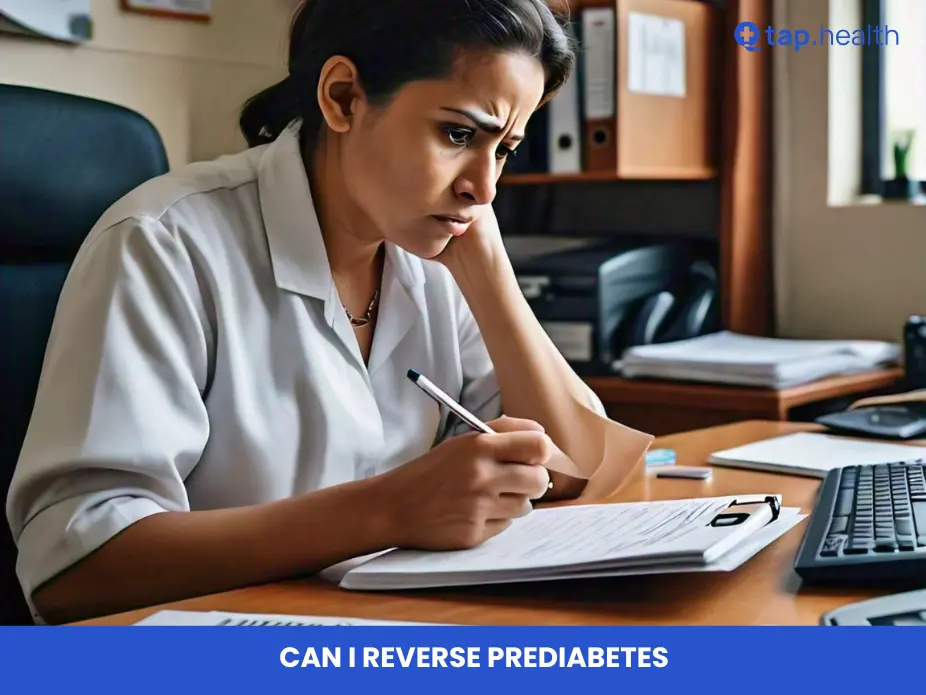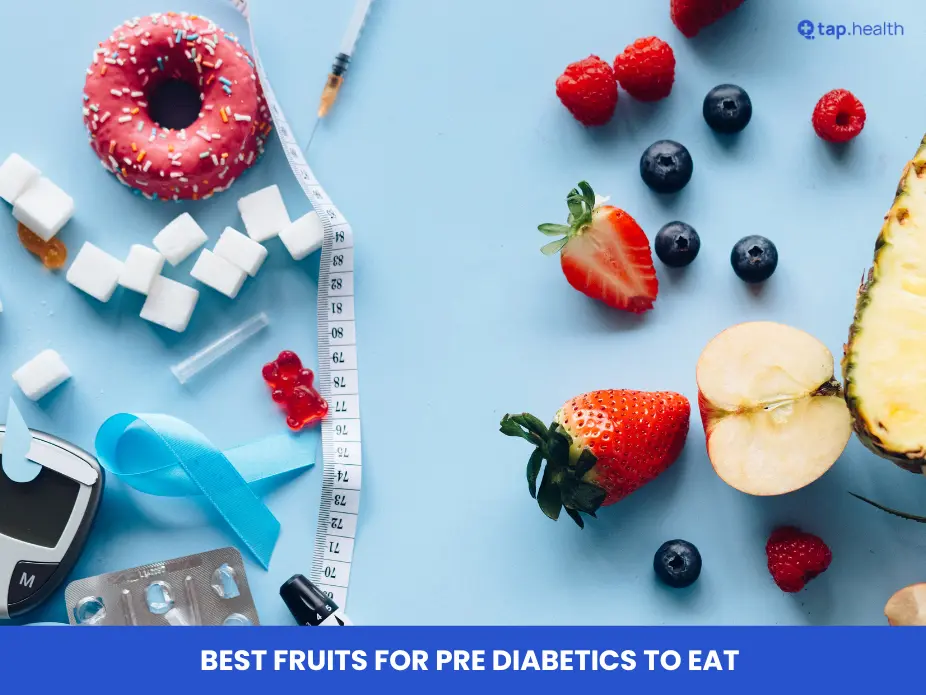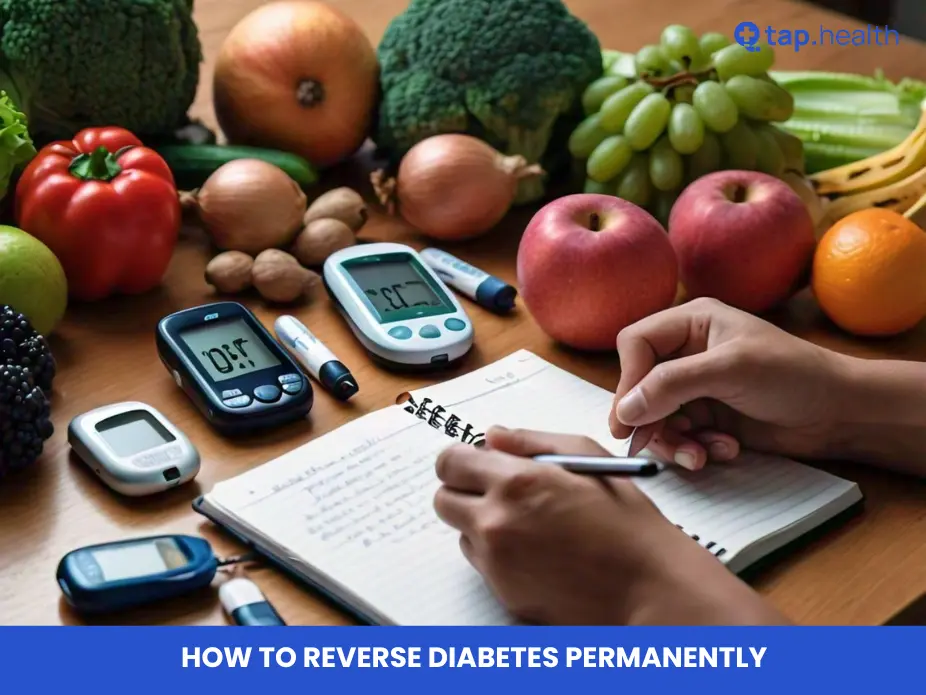Prediabetes is a crucial health warning that indicates your blood sugar levels are higher than normal, but not yet high enough to be diagnosed as type 2 diabetes. If you’ve been diagnosed with prediabetes, you might be asking yourself, “Can I reverse prediabetes?” The answer is a resounding yes! With the right lifestyle changes, many people can return their blood sugar levels to a healthy range and reduce their risk of developing type 2 diabetes. In this comprehensive guide, we will explore what prediabetes is, how it’s diagnosed, its symptoms and causes, risk factors, and, most importantly, how you can reverse it naturally.
What Is Prediabetes?
Understanding Blood Sugar and Insulin
To grasp what prediabetes is, it’s essential to understand how your body processes sugar:
- Glucose: The primary source of energy for your body’s cells. It comes from the foods you eat.
- Insulin: A hormone produced by the pancreas that helps glucose enter your cells.
In a healthy person:
- You eat food.
- Glucose enters your bloodstream.
- The pancreas releases insulin.
- Insulin helps glucose enter the cells.
- Blood sugar levels return to normal.
In prediabetes, this process doesn’t work properly. Your cells become resistant to insulin, and glucose builds up in your bloodstream instead of entering your cells. This condition is known as insulin resistance.
What Exactly Is Prediabetes?
Prediabetes is a condition where your blood sugar levels are higher than normal but not high enough for a diagnosis of type 2 diabetes. It’s a critical stage because it’s often reversible with lifestyle changes. However, without intervention, prediabetes can progress to type 2 diabetes and lead to severe health complications.
The Prevalence of Prediabetes
According to the Centers for Disease Control and Prevention (CDC):
- Approximately 88 million American adults have prediabetes.
- More than 84% of people with prediabetes don’t know they have it.
- Without lifestyle changes, 15-30% of people with prediabetes will develop type 2 diabetes within five years.
Understanding these statistics highlights the importance of early detection and intervention.
How Is Prediabetes Diagnosed?
Blood Tests
Doctors use several blood tests to diagnose prediabetes. The most common tests include:
- Fasting Plasma Glucose Test (FPG):
- Measures blood sugar after an overnight fast.
- Normal Result: Less than 100 mg/dL.
- Prediabetes: 100 to 125 mg/dL.
- Diabetes: 126 mg/dL or higher on two separate tests.
- Hemoglobin A1C Test (HbA1c):
- Reflects average blood sugar levels over the past 2 to 3 months.
- Normal Result: Below 5.7%.
- Prediabetes: 5.7% to 6.4%.
- Diabetes: 6.5% or higher on two separate tests.
- Oral Glucose Tolerance Test (OGTT):
- Measures blood sugar before and after consuming a sugary drink.
- Normal Result: Less than 140 mg/dL after two hours.
- Prediabetes: 140 to 199 mg/dL after two hours.
- Diabetes: 200 mg/dL or higher after two hours.
Is There a Higher Risk for Prediabetes at Certain Times in Life?
Certain life stages and conditions can increase the risk of developing prediabetes:
- Age: The risk increases after age 45 as insulin sensitivity tends to decline.
- Pregnancy: Women who have had gestational diabetes are at a higher risk of developing prediabetes and type 2 diabetes later in life.
- Hormonal Changes: Conditions like polycystic ovary syndrome (PCOS) can lead to insulin resistance and higher blood sugar levels.
- Puberty: Hormonal fluctuations during adolescence can affect insulin sensitivity.
Recognizing these risk factors can help you take preventive action.
What Happens When Prediabetes Becomes Type 2 Diabetes?
If prediabetes is not managed effectively, it can progress to type 2 diabetes. This transition can lead to various complications:
- Chronic High Blood Sugar: Prolonged high blood sugar levels can damage blood vessels, nerves, and organs.
- Complications:
- Heart Disease: Increased risk of heart attack and stroke.
- Kidney Disease: Damage to the kidneys can lead to kidney failure.
- Nerve Damage (Neuropathy): Can cause pain, tingling, or numbness, usually in the legs and feet.
- Eye Problems (Retinopathy): High blood sugar can damage the blood vessels in the retina, leading to vision problems or blindness.
- Poor Wound Healing: Higher risk of infections and slow healing of cuts and sores.
Recognizing the dangers of progressing to type 2 diabetes emphasizes the importance of early intervention.
What Are the Symptoms of Prediabetes?
Many people with prediabetes may not experience noticeable symptoms. However, some symptoms may include:
- Increased Thirst: Feeling thirsty more often than usual.
- Frequent Urination: Needing to urinate more often, especially at night.
- Fatigue: Feeling unusually tired or weak, even with adequate sleep.
- Blurred Vision: Having difficulty seeing clearly.
- Slow-Healing Sores: Cuts or bruises that take longer to heal.
- Dark Patches of Skin: Areas of skin that may appear darker, particularly around the neck, armpits, or groin, known as acanthosis nigricans.
If you notice any of these symptoms, it’s essential to consult a healthcare provider for evaluation.
What Are the Causes of Prediabetes?
Prediabetes is primarily caused by insulin resistance, but several factors contribute to its development:
1. Insulin Resistance
In prediabetes, the body’s cells become less responsive to insulin, requiring the pancreas to produce more insulin to maintain normal blood sugar levels. Over time, the pancreas may not be able to keep up, leading to elevated blood sugar levels.
2. Genetics
A family history of type 2 diabetes increases your risk of developing prediabetes. Genetic factors can influence how your body processes sugar and how insulin is produced.
3. Unhealthy Lifestyle Choices
- Diet: High intake of processed foods, sugary beverages, and unhealthy fats can lead to weight gain and insulin resistance.
- Physical Inactivity: A sedentary lifestyle contributes to weight gain and increases the risk of developing prediabetes.
- Obesity: Excess fat, especially around the abdomen, is strongly linked to insulin resistance.
4. Hormonal Changes
Conditions like polycystic ovary syndrome (PCOS) can lead to hormonal imbalances that affect insulin sensitivity.
5. Chronic Inflammation
Some studies suggest that chronic inflammation may play a role in the development of insulin resistance.
How to Reverse Prediabetes Naturally
Reversing prediabetes naturally involves making lifestyle changes that improve insulin sensitivity and lower blood sugar levels. Here are some effective strategies:
1. Adopt a Healthy Diet
- Eat More Fiber: Foods high in fiber help control blood sugar levels. Incorporate vegetables, fruits, beans, and whole grains into your meals.
- Choose Whole Foods: Opt for unprocessed foods like whole grains, lean meats, fish, and fresh produce.
- Limit Added Sugars: Reduce intake of sugary drinks, sweets, and processed snacks. Be mindful of hidden sugars in packaged foods.
- Healthy Fats: Include sources of healthy fats such as avocados, nuts, seeds, and olive oil.
- Control Portions: Be mindful of serving sizes to avoid overeating. Use smaller plates and bowls to help control portions.
2. Increase Physical Activity
Regular physical activity is crucial for reversing prediabetes:
- Aim for 150 Minutes a Week: Engage in moderate-intensity activities like brisk walking, swimming, or cycling. Breaking this into 30-minute sessions on most days can be effective.
- Incorporate Strength Training: Include resistance exercises at least two days a week to build muscle. Muscle helps burn more calories and improves insulin sensitivity.
- Stay Active Throughout the Day: Find opportunities to move more, such as taking the stairs instead of the elevator or walking during breaks.
3. Lose Excess Weight
Even modest weight loss can have significant effects:
- Set Achievable Goals: Aim to lose 5-10% of your body weight to improve insulin sensitivity and reduce blood sugar levels.
- Track Your Progress: Keep a food and exercise diary to monitor your intake and activity. This helps you stay accountable.
- Seek Support: Consider joining a weight loss program or working with a dietitian for personalized guidance.
4. Quit Smoking
If you smoke, quitting is essential for improving your health. Smoking increases insulin resistance and the risk of developing type 2 diabetes. Seek help through support groups, counseling, or medications.
5. Manage Stress
Stress can affect blood sugar levels, so it’s important to find effective ways to manage it:
- Relaxation Techniques: Practice deep breathing, meditation, or yoga to reduce stress and improve emotional well-being.
- Stay Connected: Spend time with friends and family to foster social support. Talking about your feelings can alleviate stress.
- Time Management: Organize your daily tasks to minimize stress and prevent feeling overwhelmed.
6. Get Enough Sleep
Quality sleep is essential for overall health and blood sugar regulation:
- Establish a Sleep Routine: Aim for 7-9 hours of quality sleep each night by going to bed and waking up at the same time each day.
- Create a Sleep-Friendly Environment: Keep your bedroom dark, quiet, and cool. Consider using blackout curtains or white noise machines.
- Limit Screen Time Before Bed: Avoid electronic devices at least one hour before bedtime to improve sleep quality.
7. Monitor Your Health
Regular health monitoring is essential for managing prediabetes:
- Regular Check-Ups: Visit your doctor to monitor your blood sugar levels and overall health.
- Know Your Numbers: Keep track of your blood pressure, cholesterol, and A1C levels. This helps you understand your health status.
- Stay Informed: Educate yourself about prediabetes and how to manage it effectively. Knowledge empowers you to make healthier choices.
What Are the Risk Factors of Prediabetes?
Understanding the risk factors for prediabetes can help you take preventive action. Key risk factors include:
- Age: Being 45 years or older increases risk.
- Family History: A parent or sibling with type 2 diabetes raises your risk.
- Weight: Being overweight or obese, especially with excess fat around the abdomen.
- Waist Size: A waist measurement over 40 inches for men or 35 inches for women increases risk.
- Physical Inactivity: Exercising less than three times a week can lead to weight gain and insulin resistance.
- Race and Ethnicity: Higher risk among African Americans, Hispanics, Native Americans, Asian Americans, and Pacific Islanders.
- Gestational Diabetes: History of diabetes during pregnancy increases the risk of developing prediabetes later.
- Polycystic Ovary Syndrome (PCOS): A hormonal disorder that can cause insulin resistance.
- High Blood Pressure: Blood pressure over 140/90 mm Hg.
- Abnormal Cholesterol Levels: Low HDL (“good”) cholesterol or high triglycerides.
Recognizing these risk factors allows you to take proactive steps to manage your health.
Can Prediabetes Be Reversed?
Yes, in many cases, prediabetes can be reversed. Research shows that adopting healthier lifestyle habits can lower blood sugar levels and improve insulin sensitivity. A study conducted by the Diabetes Prevention Program found that participants who made lifestyle changes reduced their risk of developing type 2 diabetes by 58% over three years.
Key Factors for Reversing Prediabetes
- Diet: A healthy, balanced diet is crucial for managing blood sugar levels.
- Physical Activity: Regular exercise enhances insulin sensitivity and helps with weight management.
- Weight Management: Losing even a small amount of weight can have a significant impact on blood sugar levels.
- Ongoing Support: Regular check-ups with healthcare professionals and support groups can help you stay on track.
Simple Steps to Reverse Prediabetes
1. Focus on Nutrition
- Plan Your Meals: Create weekly meal plans to ensure you have healthy options available. Include a variety of fruits, vegetables, whole grains, and lean proteins.
- Avoid Processed Foods: Limit foods high in sugar, salt, and unhealthy fats. Instead, choose whole, unprocessed foods.
- Hydration: Drink plenty of water throughout the day. Limit sugary drinks and alcohol.
2. Establish a Regular Exercise Routine
- Make it Enjoyable: Choose activities you enjoy, whether it’s dancing, hiking, or playing a sport. This will help you stay consistent.
- Incorporate Movement into Daily Life: Look for opportunities to be active, such as gardening, walking the dog, or taking the stairs.
3. Monitor Your Progress
- Track Your Blood Sugar: Use a glucose meter if advised by your doctor to monitor your blood sugar levels regularly.
- Keep a Journal: Document your meals, exercise, and any symptoms to identify patterns and areas for improvement.
4. Build a Support Network
- Seek Professional Help: Work with a dietitian or diabetes educator for personalized advice and support.
- Join Support Groups: Connecting with others facing similar challenges can provide motivation and accountability.
5. Stay Committed
- Set Realistic Goals: Focus on small, achievable goals to stay motivated. Celebrate your successes along the way.
- Be Patient: Reversing prediabetes takes time and effort. Stay committed to your journey for lasting results.
Potential Drawbacks of Prediabetes
If left unchecked, prediabetes can lead to serious health issues:
- Progression to Type 2 Diabetes: The longer you remain in a prediabetic state, the higher the risk of developing type 2 diabetes.
- Cardiovascular Disease: Prediabetes increases the risk of heart disease and stroke due to its impact on blood sugar and cholesterol levels.
- Nerve Damage (Neuropathy): High blood sugar can cause nerve damage, leading to pain or numbness, especially in the legs and feet.
- Kidney Damage (Nephropathy): Chronic high blood sugar can damage the kidneys, leading to kidney disease or failure.
- Eye Damage (Retinopathy): High blood sugar can damage blood vessels in the retina, leading to vision problems or blindness.
- Skin Conditions: Higher risk of bacterial and fungal infections.
Understanding these potential drawbacks highlights the importance of taking action to reverse prediabetes.
Recommendations for Prediabetes
If you’ve been diagnosed with prediabetes, here are some recommendations to help you manage your health:
- Regular Screening: Get tested for prediabetes if you’re over 45 or have risk factors. Early detection is key to reversing the condition.
- Lifestyle Changes: Focus on a healthy diet, regular physical activity, and weight management.
- Education: Learn about nutrition and exercise to make informed choices.
- Professional Support: Work with healthcare providers, dietitians, and diabetes educators to create a personalized plan.
- Follow-Up Care: Schedule regular check-ups to monitor your blood sugar levels and overall health.
When to See a Doctor About Prediabetes
It’s important to see a doctor if you experience any of the following:
- Regular Testing: If you’re over 45 or have risk factors, get tested every 1-3 years.
- Symptoms: If you notice increased thirst, frequent urination, fatigue, or blurred vision.
- Family History: If diabetes runs in your family, proactive testing is crucial.
- During Pregnancy: Women should be screened for gestational diabetes and monitored afterward.
- Follow-Up: If you’ve been diagnosed with prediabetes, regular follow-up appointments are important for monitoring progress.
Also read this : Understanding Alcohol Intolerance in People with Diabetes: Symptoms and Causes
Frequently Asked Questions on Can I Reverse Prediabetes?
1. Can children develop prediabetes?
Yes, due to rising obesity rates, children and adolescents can develop prediabetes. Healthy lifestyle habits are crucial from a young age.
2. Is medication necessary to reverse prediabetes?
Lifestyle changes are the first line of defense. Medication may be prescribed if lifestyle changes aren’t enough or if you’re at high risk.
3. Can prediabetes return after being reversed?
Yes, if healthy habits aren’t maintained, blood sugar levels can rise again. Ongoing commitment is essential.
4. Are there any supplements that help with prediabetes?
Some studies suggest benefits from supplements like chromium or cinnamon, but more research is needed. Always consult a doctor before starting supplements.
5. How quickly can prediabetes be reversed?
It varies per individual. Some may see improvements in a few months, while others may take longer.
References
- Centers for Disease Control and Prevention (CDC)
- National Institute of Diabetes and Digestive and Kidney Diseases (NIDDK)



